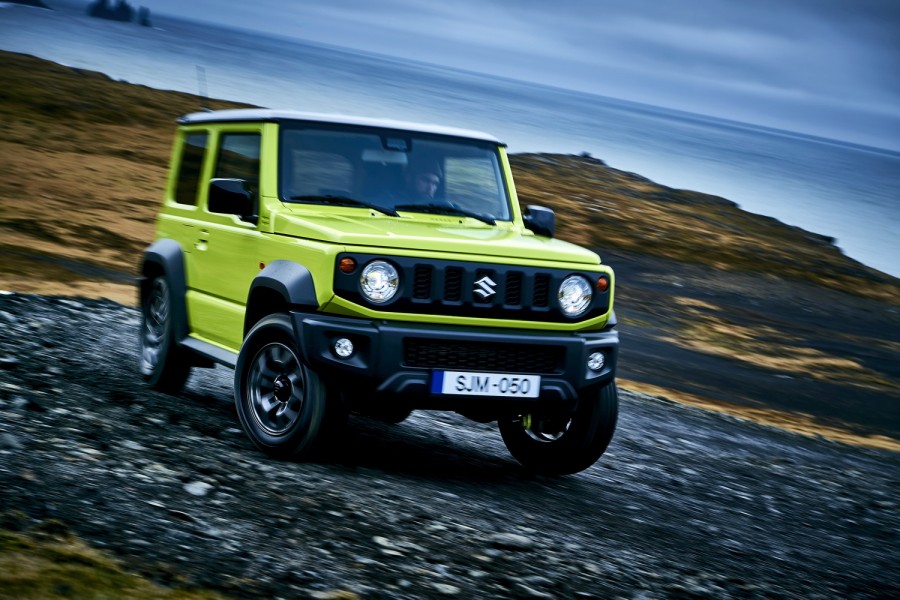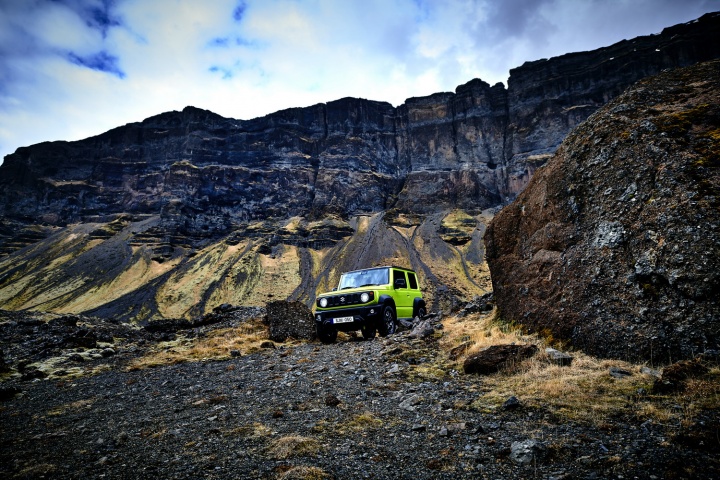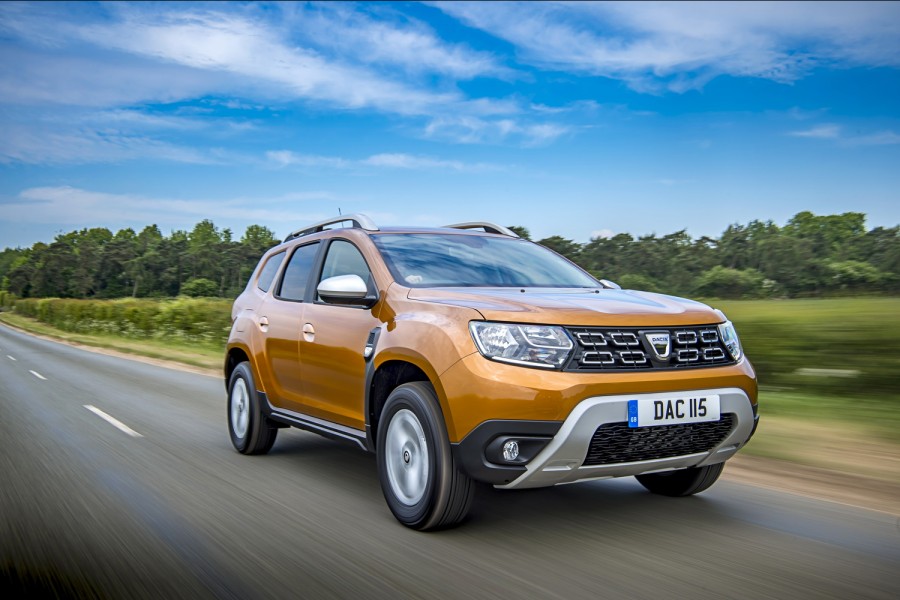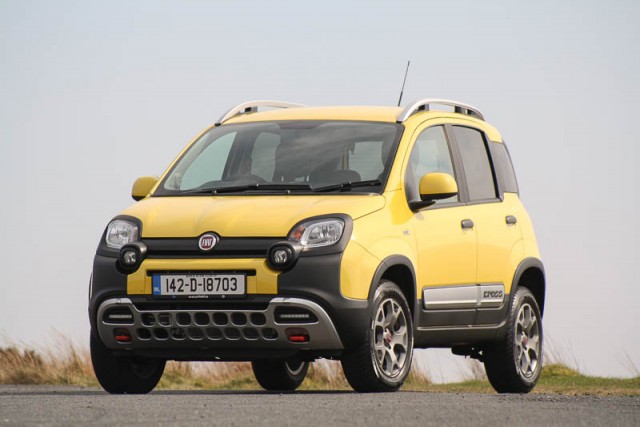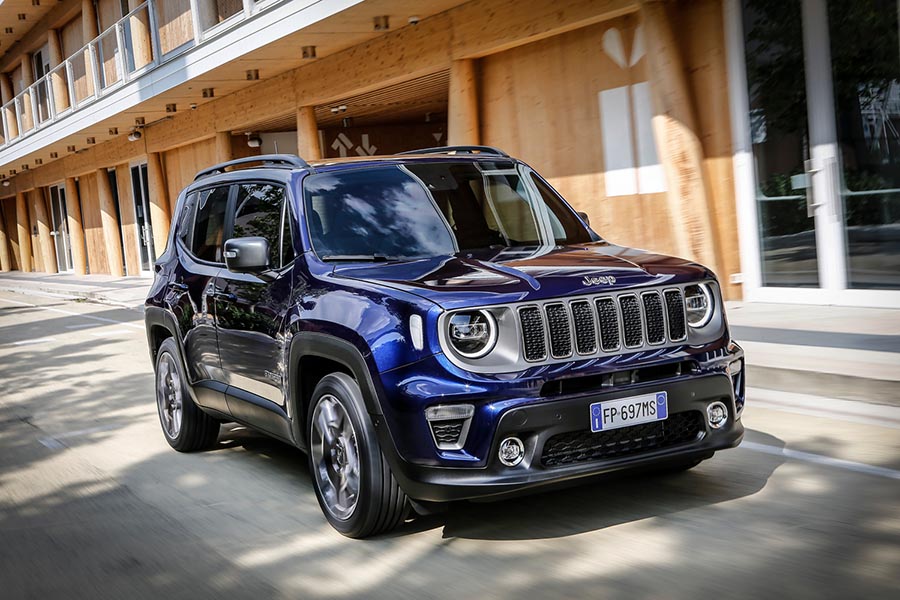Can there ever be a car with a bigger disparity between the love and affection it was held in by its owners, and the withering critical appraisals it received, than the old Suzuki Jimny? Characterful and surprisingly adept off-road, through three generations and 48 years on sale, it has been kind of a shrunken analogue of the Land Rover Defender and original Mercedes-Benz G-Wagen; very cool, if perhaps not the most refined of machines. So, can this new, chunky take on the Jimny formula tempt in a new, wider buying clientele, or is it just more of the same old niche-market stuff...?
In the metal
Take a good, long look at this little thing, because it might well be the best-looking contrivance on sale right now. And we're not just talking about cars, either. It's about perfect to behold, being a 4x4 that looks fondly back on its past ancestors but one that has a clearly modern and individual slant to its appearance. With its boxy lines and minuscule proportions, the Jimny manages to be cute without being twee, as well as bold and assertive without coming across as trying too hard.
Kinetic Yellow is a signature colour for the diminutive Jimny and shows off the black wheel arch spats and roof to their best degree, but any shade suits lines as good as these - Jungle Green, in particular, bearing the whiff of reminiscence for the Suzuki's antecedents, which were often painted in army-fatigues green. Want to know which bits of the new car are inspired by the old? OK, the round headlamps and separated indicators are from the LJ10/LJ20 models, made from 1970-1981. The clamshell bonnet, complete with little horizontal lines on the A-pillar bases, and the gathered combination lamps in the rear bumper are pure SJ410/SJ413 (1981-1998). And the five-bar front grille and generally more upmarket appearance of the whole thing is an evolution of its direct predecessor (and the only car actually sold with the name-badge 'Jimny' here in northern Europe), the Mk3 (1998-2017). It doesn't matter about all these facts, though, because if you can't look upon the Jimny Mk4's cheerful appearance and smile, you must be slightly dead inside. Seriously.
Inside the car, it's functional and soft-touch-free... and it's all the better for it. The quality levels have still taken a considerable upswing from the old Jimny, though, even if the dashboard is made of simple, hard-wearing black plastic. Items lifted from other Suzukis, like the Swift and Baleno, lend a touch of class (the SZ5's leather steering wheel and the column stalks are particularly nice to hold and operate), while the touchscreen infotainment is of a decent level. Maybe not right at the cutting edge, but good enough to hack it in the modern day. On the aesthetic theme, we particularly like the metallic-finish cubist pods that house the instrument cluster.
There's a grab-handle on the passenger-side of the dash and a small, stubby lever down on the floor for the switchable all-wheel drive, while seating is for four. With three doors, accessing the back row is not massively easy, but, once you're there, room for legs, heads, shoulders and elbows is excellent, because the squared-off shape of the Jimny is such that it's tall and lengthy in the cabin, while the rear two seats are mounted inboard of the fronts, which allows for more space for arms.
The only problem here is that the boot is ridiculously small with all the seats in place, so if you want to access that 377 litres of cargo capacity (up 53 litres on the old one), you have to fold down the rear chairs - meaning it's 'either/or' when it comes to carting about passengers/luggage. Anyway, drop the second-row seats into the floor and you'll see their backs are covered in durable plastic, which is a clever practicality touch - although a cargo net would be advisable, as stuff does slide around on them somewhat.
Driving it
The old Jimnys majored on being tough off-road. This often made them awful to drive on tarmac; the tall and narrow SJ410, for instance, had a propensity to roll over if you cornered at anything more than 50km/h, while the Mk3 Jimny had a ride that was like piloting a bouncy castle with knackered dampers along corrugated iron.
And yet, despite these catastrophic flaws, people who bought Jimnys loved them. Chiefly for their rugged, no-nonsense, go-anywhere ability, at a low price. To that end, what Suzuki has to try and do with the Mk4 is keep these diehard Jimny loyalists happy, while simultaneously enticing new customers to the fold with improved on-road manners. This is a tricky balancing act to pull off.
So, how has Suzuki gone about it? First up, please do not call this thing an 'SUV' or, heaven forfend, a 'crossover'. It has no pretensions to the supposed sportiness or thrusting, middle-management driveway image associated with the former vehicle type, while it shares precisely no underpinnings whatsoever with any of its Suzuki stablemates to see it saddled with the nomenclature associated with the kind of puffed-up hatchbacks that, bizarrely, are all the rage these days.
The Jimny Mk4 sits on a ladder-frame chassis. This is proper 4x4 stuff, and it's the same chassis that was under the old Jimny, only it has been reinforced with a new x-shaped cross-member and two additional straight spars, making the car much more rigid in torsion than before. The Suzuki also has Allgrip Pro four-wheel drive, which is altogether more senior than the Allgrip system you'd find on a Vitara. This means it has 2H high-ratio two-wheel drive (and it's rear-wheel drive, as well), 4H high-ratio all-wheel drive and then proper 'crawler' 4L low-ratio AWD. You can switch between 2H and 4H on the fly at speeds of up to 100km/h, but to engage 4L, the Jimny needs to be parked, in neutral, its front wheels straight and the clutch pedal depressed.
The Jimny also gains Hill Start Assist (HSA), Hill Descent Control (HDC) and a brake LSD traction control system, while it has some serious angles - approach is 37 degrees, ramp breakover is 28 degrees and departure is a 49 degrees. It also has 211mm of ground clearance and a set of 195/80 R15 Bridgestone Dueler all-terrain tyres, while the whole vehicle clocks in at a modest 1,145kg.
So it remains a terrific off-roader. The course set out for us by Suzuki was only moderately challenging by 4x4 standards, and yet it would have had something like a Renault Captur contemplating a long lie down in a darkened room with a damp flannel over its eyes. The Jimny, though, aced it. Took on rutted tracks with aplomb. Waded its way through a deep, muddy bog with little difficulty. Clambered down steep descents and up ascents like the mechanical mountain goat is assuredly is. And it also forded a rocky stream as if it were splashing through a shallow puddle on the M50.
All this is no surprise, though, because older Jimnys were like this. The revelation comes on the road. Powered by a new 1.5-litre four-cylinder petrol engine, delivering 101hp and 130Nm (up from the 85hp and 110Nm possessed by the Mk3 Jimny's 1.3-litre motor), and mated to a standard-fit five-speed manual (a four-speed auto is an option), the Jimny Mk4 is neither fast (Suzuki won't even quote a 0-100km/h time for it, but reckon on 12 seconds at the absolute best), nor great for handling. There's a lot of body lean, tyre squeal starts at very low speeds, the recirculating ball steering is vague around the dead ahead and the Jimny feels a bit nervous if you ask it to do anything more than 120km/h (where it will be revving at a frenetic 3,750rpm in top) - also, braking from such speeds is an exhilarating experience, for all the wrong reasons. We don't even want to think about what would happen if you enacted rapid direction-change scenarios in it, either...
But if you're hurtling into bends in the Jimny and lamenting its odd handling mannerisms, that's entirely missing the point. This is a car built for ambling. Wind down the window, plant your elbow on the door and just toddle along, short-shifting the pleasant-to-use manual gearbox at 3,500rpm at most. That way, you won't make the 1.5-litre engine scream, which it does at 4,500rpm and beyond, and you can instead enjoy its controllable throttle response and smooth, vibration-free operation.
Yet it's the ride that is best of all. Yes, if it hits a number of big compressions in quick succession at 100km/h, the Jimny's frame starts to bobble about in a disconcerting style, but for the rest of the time it's perfectly fine. The body control is very good, the damping is excellent and it proves to be comfortable to travel in, rather than sick-inducing. It even managed to hold its own on a German autobahn, emphatically not its comfort zone, but a place where - once it was wound up to 110km/h - the Jimny turned in an excellent showing. Even the wind noise is admirably quelled, considering you're forcing a tiny house brick through the air at speed.
Here's the shorter synopsis: the Jimny is like a boil-washed Defender or G-Wagen, only it has far more positive controls and much better refinement. Oh, and it's about a third of the price of either of these illustrious, larger and now obsolete machines. Magnificent.
What you get for your money
The Suzuki Jimny Mk4 is due to go on sale in the New Year, so prices are still not confirmed for Ireland. Expect it to slot in between the Ignis's starting ticket of €13,995 and the base €20,995 of the larger SX4 S-Cross.
On these shores, the company's pricing and trim structure is linked closely to the UK, where we know there will be two trim grades of SZ4 and SZ5, so expect those to carry over. That means all Jimny buyers will enjoy at least selectable four-wheel drive with low-ratio transfer, auto headlights with high-beam assist, Dual Sensor Brake Support (DSBS) safety kit, air conditioning, a CD player with Bluetooth connectivity, cruise control and front foglamps, with the plusher SZ5 adding gunmetal 15-inch alloys (the SZ4 gets rather cool 15-inch black steel rims), LED headlights with washers, a leather-trimmed steering wheel, climate control, full satnav with smartphone link on a seven-inch touchscreen, rear privacy glass, heated front seats and body-coloured door handles.
Sadly, in the immediate days after we drove the Suzuki Jimny, it garnered a rather disappointing three-star Euro NCAP safety rating. The safety body criticised the Jimny for its adult occupant protection in the event of an accident, while also saying that its driver assist safety systems - including that DSBS, which includes Autonomous Emergency Braking, Traffic-Sign Recognition, Lane Departure Warning and Weaving Alert Function - didn't perform as well as expected.
Summary
The key to unlocking full Suzuki Jimny Mk4 enjoyment is never to ask it to do too much on the road - full throttle through the lower three gears, barrelling into corners, taking on twisting back routes... these are not its strengths. But use it at a gentler pace and it makes perfect, almost irresistible sense. It'll happily tool along at 90-100km/h, with impressive ride quality and a feelgood factor that's just about off the scale. All of its off-road prowess is preserved, the cabin quality has been invigorated, it looks utterly tremendous outside and it should be less than €20,000 when prices are finally announced. Seriously, if you like cars in the slightest, how on Earth can you not fall head over heels in love with a machine like this superb new Suzuki Jimny?

